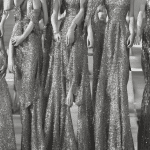In an era where gender equality is globally echoed, it’s only logical to align sports along this line. Women’s representation in sports has traditionally been at the lower end, especially when it comes to leadership roles. However, this tide has been shifting lately, with more women assuming top roles, a trend that promises to reshape the future of sports. Let’s take a deep dive into the current status and future prospects of women’s representation in sports leadership.
The Current State of Women in Sports Leadership
In the present day, women have proven their will to excel in various spheres, including sports. They have shown remarkable prowess, not only as athletes but also in leadership roles within the sports industry. Even so, the gender imbalance is still evident. The gap between male and female leaders in sports is vast, but the question is, why does this disparity exist and what’s being done to bridge this gap?
A lire aussi : What’s the Best Way to Handle a Dog’s Fear of Veterinary Visits?
Surprisingly, despite the increasing number of women participating in sports, they are still underrepresented in leadership positions. Women hold less than a third of all senior positions in global sports organizations. Worse still, at the university level, the number of women in athletic leadership positions has declined over time. This is despite the fact that the number of women participating in university-level sports has significantly increased.
The Challenges Facing Women in Sports Leadership
As with any other field, women in sports leadership face a range of challenges. For one, there’s the issue of gender stereotypes which assert that men are ‘naturally’ suited for leadership while women are better off as followers. This notion has been deeply ingrained, affecting how people perceive women in top ranks.
Cela peut vous intéresser : How to Ensure Proper Dental Care for Your Pet Rabbit?
Secondly, there is a lack of support systems for women in sports leadership roles. This includes limited opportunities for mentorship and training that could enhance their leadership skills. Most of the time, women leaders in sports find themselves as the only females in a male-dominated space, making it harder for them to fit in and thrive.
Lastly, the issue of work-life balance often comes to the fore. The demands of leadership roles in sports can be quite intensive, often infringing on personal time. This aspect can be more challenging for women, especially those with family commitments.
The Efforts to Promote Women in Sports Leadership
Despite the challenges, it’s heartening to see the ongoing efforts to promote women in sports leadership. For starters, there are global initiatives aimed at promoting gender equality in sports. These initiatives seek to increase the number of women in sports leadership roles, through advocacy, policy changes, and development programs.
Furthermore, many sports organizations are now recognizing the need to have more women leaders. They are actively working towards creating more inclusive environments that support and nurture female leadership. These steps include adopting policies that encourage diversity and inclusion, creating platforms for mentorship, and providing opportunities for leadership training specifically tailored for women.
Universities, too, are playing their part by offering leadership courses for female athletes. By doing so, they not only help equip these athletes with leadership skills but also set them up for future leadership roles in the sports world.
The Future of Women in Sports Leadership
The future of women in sports leadership looks promising. As more girls engage in sports, they are exposed to the possibility of taking up leadership roles in the future. Coupled with the ongoing global initiatives and changes within sports organizations, there is hope for an even playing field.
There’s also a growing trend of men actively advocating for women’s leadership in sports. This support from male counterparts is pivotal and brings a new dynamic to the push for more representation. It’s not just about women fighting for space, but everyone recognizing the need for gender-balanced leadership.
The prospect of seeing more women leading in sports is exciting. It’s not just about representation, but the unique skills and perspectives that women bring to the table. A balance in gender leadership in sports will foster creativity, innovation, and growth in the industry.
As much as there’s still work to be done, the steps being taken are indeed promising. However, the full realization of women’s potential in sports leadership will not only depend on these efforts but also on the evolving attitudes towards women leaders. The future of women in sports leadership is not just about numbers, it’s about breaking barriers and challenging the status quo. And that’s a game we should all be willing to play.
Increasing Visibility and Representation for Women in Sports Leadership
The momentum for increasing women’s representation in sports leadership is undeniable. The challenge lies not just in equalizing the numbers, but also in addressing the gender bias that has, for a long time, marginalized female leaders in the sports arena.
Visibility is a crucial aspect of this drive. As more female athletes take up leadership roles, they become role models to younger generations. This visibility works to encourage and inspire young girls and women to consider sports leadership as a viable career path.
The rise of women sports pioneers has also been instrumental in challenging the status quo. Their leadership and success stories have helped to dispel the stereotype that sports leadership is a male domain. These women have proven that they are just as competent and capable as their male counterparts.
In an effort to further boost the visibility of women in sports leadership, media plays a critical role. Through balanced and fair coverage of women in sports, the media can help to shift societal attitudes and perceptions towards female leadership in sports.
Moreover, the implementation of policies that promote gender equity in sports leadership is a step in the right direction. These policies should aim to provide equal opportunities for both men and women in sports management and leadership roles.
Conclusion
The journey towards achieving gender equality in sports leadership is a marathon, not a sprint. It will require concerted efforts from all stakeholders, including sports organizations, universities, policymakers, and society at large.
It is crucial to keep in mind that the goal is not just to have more women in leadership positions, but also to create a conducive environment that values, respects, and appreciates the unique contributions of women in sports leadership.
The increasing number of women in sports leadership is a clear indication that change is happening. While there are still hurdles to overcome, the future looks promising for female athletes aspiring to become leaders in the sports industry.
The push for gender equity in sports leadership is not just about fairness, it’s about leveraging on the diversity of skills, perspectives, and experiences that women bring to the table. This diversity is key to driving innovation, growth, and success in sports.
One thing is clear, the future of women in sports leadership is not just about achieving numerical parity. It’s about dismantling the entrenched gender biases that hinder women from fully realizing their potential in sports leadership. Above all, it’s about creating a sport management landscape where everyone, regardless of their gender, is given a fair shot at leadership.
The future of sports leadership is indeed female, and it’s a game that every one of us should be excited to be a part of.










